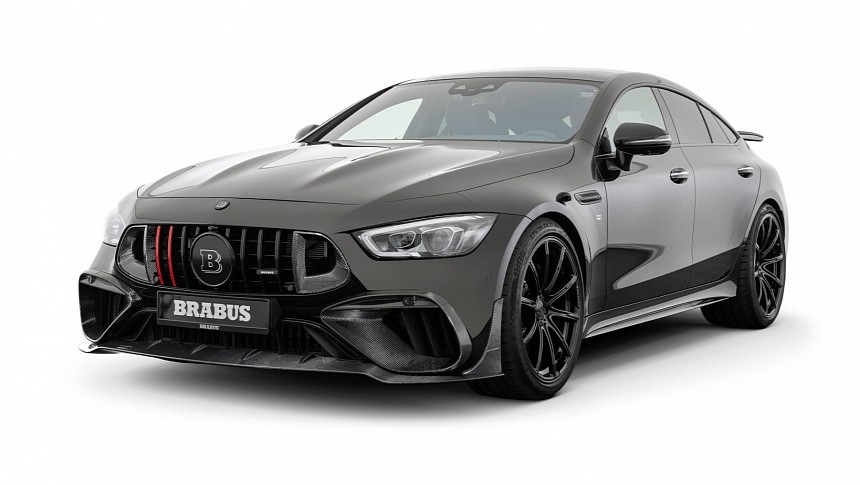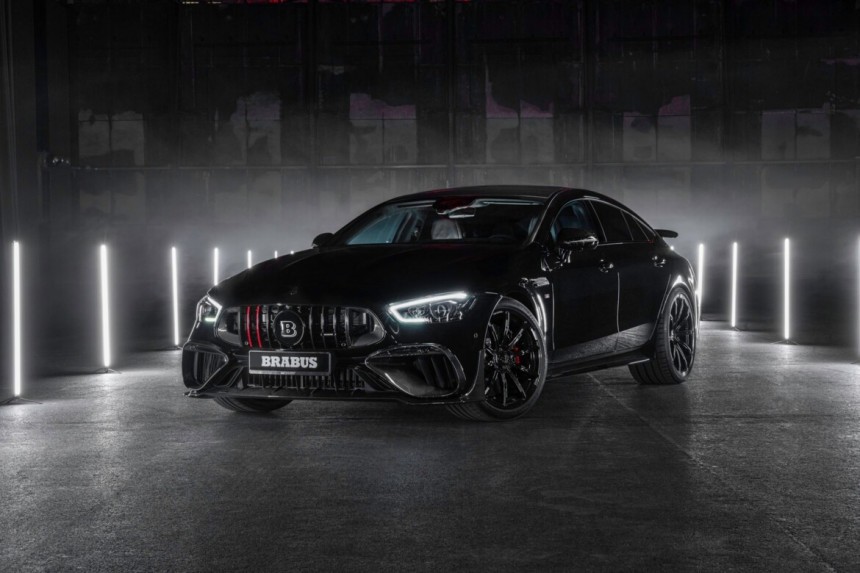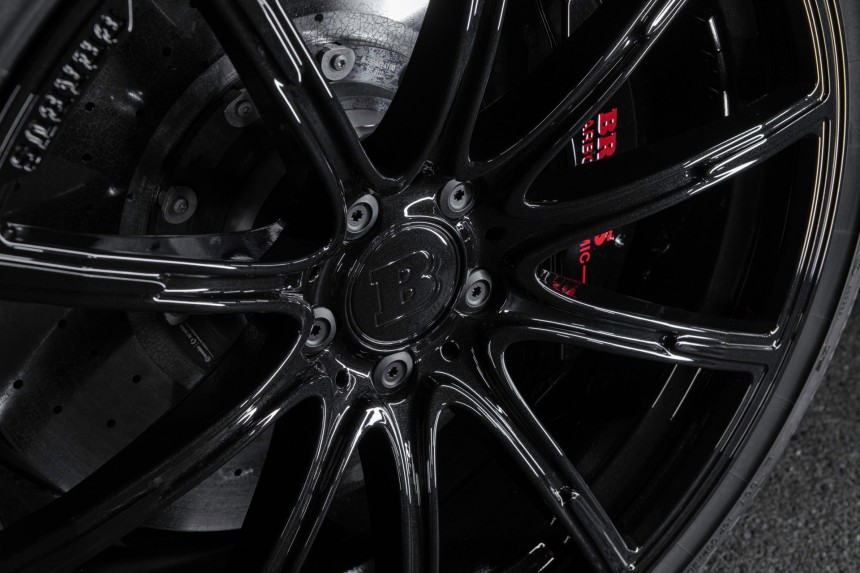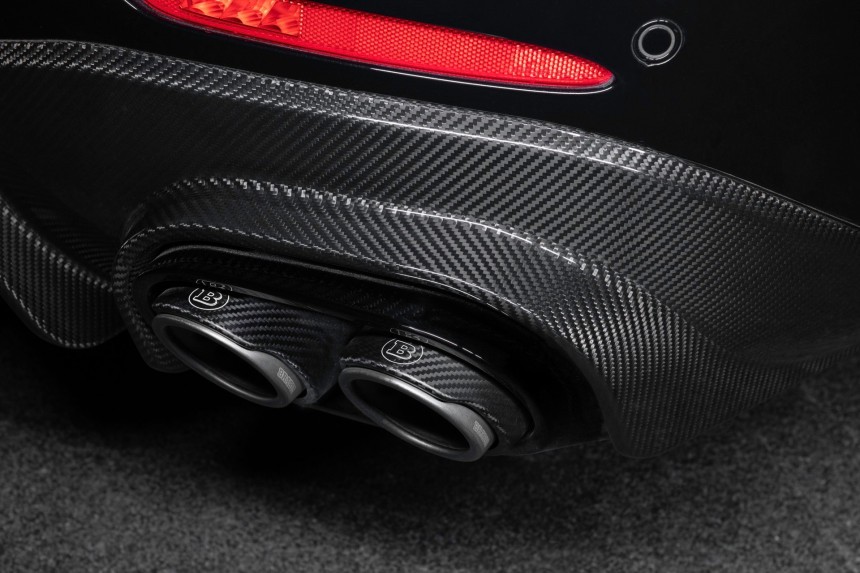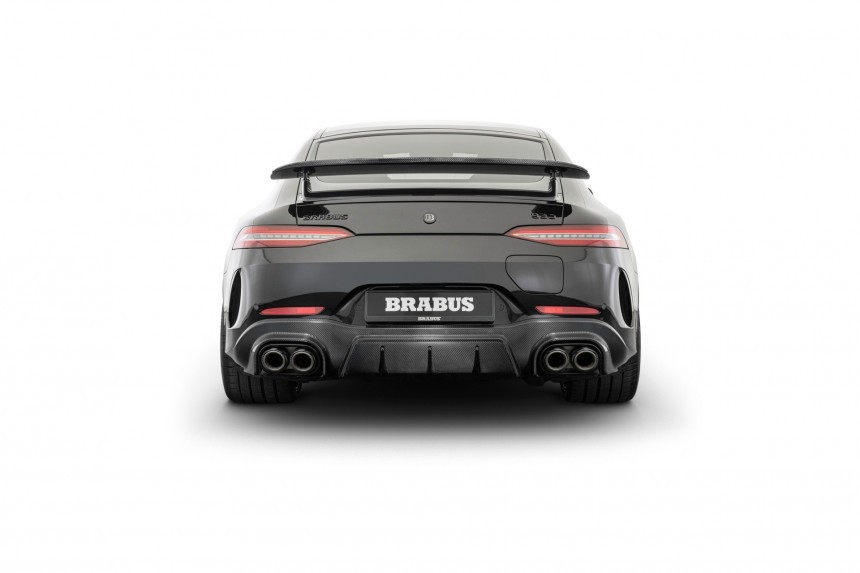We can all agree that Mercedes makes fine automobiles, and the Stuttgart Colossus has produced a (great) number of remarkable speed demons over the years. But, because the Germans aren’t so easy to content with technology – particularly in the mechanical field – the AMG division took it one step above. And this would be the end of the story, were it not for another company that likes to play the high notes of piston concertos picking up from where the others left off. Please stand up, everybody; Brabus has done it again.
This time, the German tuner isn’t challenging automotive rivals, speed limits, or plain engineering logic. No, that is way too mainstream, and Brabus has been at it for so long that it wouldn’t surprise anyone anymore. They have a different bar over which to jump now: physics.
The latest four-wheeled act of science defiance from the house of outrage and horsepower is the Brabus 930. There is no other way of saying this nicely, so here it comes: it’s the most powerful supercar built by Brabus. Ever.
930 stands for German metric horsepower (PS), the equivalent of 917 horsepower. This Armageddon with intake valves is based on the equally marauding Mercedes-AMG GT 63 S E Performance. “The most powerful production vehicle we have ever made” is how AMG describes their masterpiece; that alone is a big statement.
But then Brabus has a go and says, “Wait a tenth of a second; this thing can be better.” And better it is, at least in the performance sector—the Brabus 930 scores 1,550 Nm in the crank-tormenting evaluation test (1,143 lb-ft of torque).
The tuner does not specify whether its wrench-wielding elves have fiddled with just the four-liter biturbo plant or have done some magic to the electric motor on the rear axle. Not that it would matter because it’s the total system output that matters, and that is delivered in cargo-ship loads.
With 917 hp and 1,143 lb-ft, the Brabus 930 gets to 196 mph (316 kph) without drama but refuses to go beyond that barrier. Not because it runs out of breath or anything; call it professional courtesy for their co-nationals at Continental. The high-performance tire makers Continental.
Brabus took the poetically-named Mercedes-AMG GT 63 S E Performance (sometimes, Germans get carried away by their sense of humor, and the result is a catchy name like this) and made it faster. But the tuner didn’t put on new rubbers. The Continental SportContact 7 is why the Brabus 930 is electronically censored at that frustratingly close to 200 mph (320 kph) barrier – to prevent the tires from wearing out prematurely.
The nine-speed gearbox allows a fully automatic experience or the thrilling sensation of manual paddle shifting (the driver has the option at the touch of a button). The AMG model that the Brabus 930 is built on was a very fast car, to begin with. 2.9 seconds for the 0-62 mph (100 kph), 843 PS (831 hp), 1,400 Nm (1,033 lb-ft) – that’s hypercar status.
Thanks to the extra torque and power, the all-wheel-driven Brabus takes one-tenth less than that to reach the 62-mph mark. The valve-controlled exhaust system with 90 mm (3.54-inch) carbon-titanium backpressure-reducing tailpipes helps with the performance specs.
Also, the 21- and 22-inch Monoblock Z "Platinum Edition" forged wheels might have a say in this race against speed itself. A custom Brabus suspension module adjusts the ride height by 20 millimeters (0.8 inches). It may not sound or look like much. Still, at 196 mph, the lower stance significantly improves driving dynamics and handling through the lowered center of gravity.
As I’ve mentioned, the Continental tires are carried over from the AMG GT 63 S E Performance, and Brabus didn’t take the extravagance route in the styling of the 930. Apart from the two red vertical stripes on the grille, and the mandatory Brabus badging, little gives away this car’s identity.
The obvious visual cues are the oversized B logo on the grille (as if size alone wasn’t enough, the emblem is illuminated) and the more discrete crests on the hood and trunk lid. The front fender insignia tell that this is a Brabus, and the rear script reads “Brabus” and “930,” but that’s a little challenging to notice, written in black over black.
Of course, carbon fiber is offered without reserve – inside and out – and so is leather (the interior is virtually padded with bovine hide from floor to pillars. The headliner is Alcantara, though, but there’s plenty of leather in the trunk to compensate). The seats are perforated as a luxurious comfort touch so the occupants thoroughly enjoy the integrated climate control system.
About the carbon fiber aesthetics: Brabus made the front spoiler, grille, and skirt add-on parts and the rear diffusor out of the lightweight, super strong material. And that’s only what the onlooker notices from up close. Five different trim packages are available for the interior – either with one, two, three, or eight carbon fiber elements.
The latest four-wheeled act of science defiance from the house of outrage and horsepower is the Brabus 930. There is no other way of saying this nicely, so here it comes: it’s the most powerful supercar built by Brabus. Ever.
930 stands for German metric horsepower (PS), the equivalent of 917 horsepower. This Armageddon with intake valves is based on the equally marauding Mercedes-AMG GT 63 S E Performance. “The most powerful production vehicle we have ever made” is how AMG describes their masterpiece; that alone is a big statement.
The tuner does not specify whether its wrench-wielding elves have fiddled with just the four-liter biturbo plant or have done some magic to the electric motor on the rear axle. Not that it would matter because it’s the total system output that matters, and that is delivered in cargo-ship loads.
With 917 hp and 1,143 lb-ft, the Brabus 930 gets to 196 mph (316 kph) without drama but refuses to go beyond that barrier. Not because it runs out of breath or anything; call it professional courtesy for their co-nationals at Continental. The high-performance tire makers Continental.
The nine-speed gearbox allows a fully automatic experience or the thrilling sensation of manual paddle shifting (the driver has the option at the touch of a button). The AMG model that the Brabus 930 is built on was a very fast car, to begin with. 2.9 seconds for the 0-62 mph (100 kph), 843 PS (831 hp), 1,400 Nm (1,033 lb-ft) – that’s hypercar status.
Thanks to the extra torque and power, the all-wheel-driven Brabus takes one-tenth less than that to reach the 62-mph mark. The valve-controlled exhaust system with 90 mm (3.54-inch) carbon-titanium backpressure-reducing tailpipes helps with the performance specs.
As I’ve mentioned, the Continental tires are carried over from the AMG GT 63 S E Performance, and Brabus didn’t take the extravagance route in the styling of the 930. Apart from the two red vertical stripes on the grille, and the mandatory Brabus badging, little gives away this car’s identity.
The obvious visual cues are the oversized B logo on the grille (as if size alone wasn’t enough, the emblem is illuminated) and the more discrete crests on the hood and trunk lid. The front fender insignia tell that this is a Brabus, and the rear script reads “Brabus” and “930,” but that’s a little challenging to notice, written in black over black.
About the carbon fiber aesthetics: Brabus made the front spoiler, grille, and skirt add-on parts and the rear diffusor out of the lightweight, super strong material. And that’s only what the onlooker notices from up close. Five different trim packages are available for the interior – either with one, two, three, or eight carbon fiber elements.
